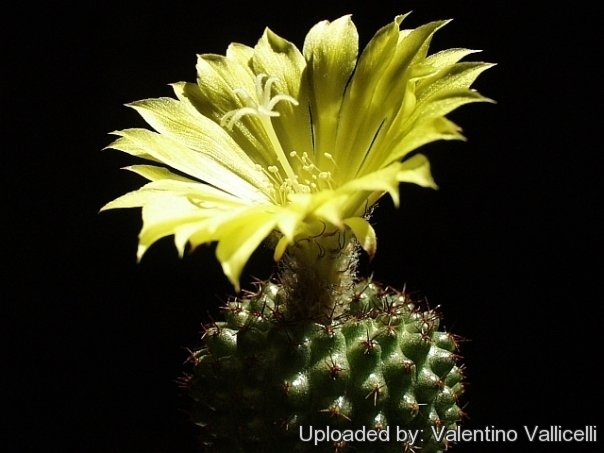
Frailea chiquitana Photo by: Valentino Vallicelli
Origin and Habitat: Chiquitos and Cordillera province, department of Santa Cruz, Bolivia. (Dr. Cardenas is of the opinion that Frailea chiquitanaSN|3606]]SN|3603]], from Chiquitos, Bolivia, is in fact the most northerly member of the genus. )
Type locality: Serranía de San Miscrato, Chiquitos province, Bolivia.
Altitude: The altitude varies between 150-900 metres above sea level.
Habitat: It is found on inselbergs in the ecotonal region between the Bolivian part of the 'cerrado' and Amazonian forests with high average temperatures for most of the year. It grows on flat rocks only in shady, forested areas where soil retains moisture during short droughts and the rainfall is in excess of 1000 mm per annum, but given the very rocky substrate, the water should drain away quickly. The soil is fine sandy-loamy or fine grained and permeable, but too shallow for a lot of plants that otherwise would shade out the tiny frailea. Frailea chiquitanaSN|3603]]SN|3603]] grow isolated or in dense colonies in all sizes and grow together with Frailea pullispinaSN|3603]]SN|3606]] and Echinopsis hammerschmdii.
Synonyms:
See all synonyms of Frailea chiquitana
back
Accepted name in llifle Database:Frailea chiquitana CárdenasNatl. Cact. Succ. J. vi. 8 (1951).Synonymy: 6
back
Description: Frailea chiquitanaSN|3603]]SN|3603]] is a dwarf cactus with unique and remarkably beautiful shape. Contrary to most representatives of the genus Frailea, this species show no cleistogamous flowers.
Habit: It is a s small depressed perennial stem succulent, usually solitary, rarely offsetting or many-stemmed forming low, flat clusters that grow deeply seated flat to the ground surface. Only in cultivation plants may have a spherical till columnar shape.
Roots: Conical, tuberous, with fine lateral diffuse roots.
Stems: Depressed-spherical to spherical, rarely short-cylindricand more or less imbilicate at apex. Individual stems 2,5-3,5(-4) cm in diameter, 2-3 cm tall (or more in cultivation) yellowish or bluish green or tinged with purplish and with a dark purple-brown lunate, blots situated below the areoles.
Ribs: Numerous, (14-)18-24(-31), very small size (16 mm from rib tip to rib tip) straight, low, but well-defined that, despite its almost spherical shape gives it a high Surface/Volume ratio, and broken up into conspicuous, blunt tubercles 2-3 mm in diameter, often with pronounced reddish markings beneath.
Areoles: Large elliptical, prominent, white to dark brown often with persistent white wool.
Spines: Not or slightly interlaced. to 3 mm, whitish or more often dark brown to blackish.
Central spines: Absent, occasionally 1 to 3 dark brown, up to 3 mm long.
Radial spines: (4-)5-8(-12) pectinate, bristle-like, whitish, adpressed up to 3 mm long.
Flowers: Apical, diurnal, radial, funnelform to bell shaped, light to sulphur yellow from the top of the plant, 1,7-2(-3,2) mm long 2,2-2,5(-4) cm wide. Buds with light brown wool. Tepals attenuate-acute. Stigma-lobes 5-7, to 5,5 mm very slender.
Fruit: Dry indehiscent with scales and bristles that detach easily up to 10 mm in diameter, pericarp membranous, fragile that break easily releasing the seed.
Seeds: 2 mm in diameter, shiny dark brown to blackish. smooth. hilum elongate-ovate-oblong. The seed is shaped strangely for a cactus , and is often described as “hat” or “boat” shaped with a prominent edge. That is a good description, for it is among the few cactus seeds that float! They are thought to be dispersed in habitat by floating away on runoff.
Subspecies, varieties, forms and cultivars of plants belonging to the Frailea chiquitana group
 Frailea chiquitana Cárdenas: has green or purplish stems with dark purple-brown lunate, blots below the areoles. This species show no cleistogamous flowers. Distribution: Chiquitos and Cordillera province, department of Santa Cruz, Bolivia.
Frailea chiquitana Cárdenas: has green or purplish stems with dark purple-brown lunate, blots below the areoles. This species show no cleistogamous flowers. Distribution: Chiquitos and Cordillera province, department of Santa Cruz, Bolivia. Frailea chiquitana f. cristata hort.: crested form. Garden origin.
Frailea chiquitana f. cristata hort.: crested form. Garden origin.
Bibliography: Major references and further lectures
1) Walther Haage “Kakteen von A bis Z” , Neumann Verlag 1981
2) Edward Anderson “The Cactus family” Timber Press, Incorporated, 2001
3) James Cullen, Sabina G. Knees, H. Suzanne Cubey "The European Garden Flora Flowering Plants: A Manual for the Identification of Plants Cultivated in Europe, Both Out-of-Doors and Under Glass" Cambridge University Press, 11/Aug/2011
4) Succulenta 49(9): front cover (Illustration) 1970
5) David R Hunt; Nigel P Taylor; Graham Charles; International Cactaceae Systematics Group. "The New Cactus Lexicon" dh books, 2006
6) Sara Oldfield “Cactus and Succulent Plants: Status Survey and Conservation Action Plan” IUCN, 01/gen/1997
7) Curt Backeberg “Cactus Lexicon: Enumeratio Diagnostica Cactacearum” Blandford Press, 01/Jan/1977
8) Cullman, W. et al. “The Encyclopedia of Cacti” Alpha Books, 1984
9) National Cactus and Succulent Journal. Volume 6, page 8. 1951
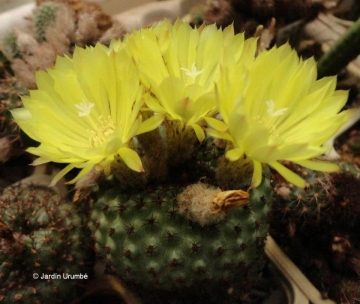 Frailea chiquitana Photo by: Alexander Arzberger
Frailea chiquitana Photo by: Alexander Arzberger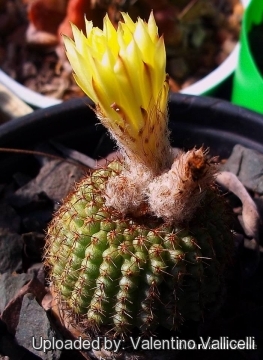 Frailea chiquitana Photo by: Valentino Vallicelli
Frailea chiquitana Photo by: Valentino Vallicelli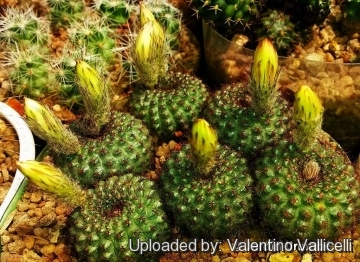 Frailea chiquitana Photo by: Valentino Vallicelli
Frailea chiquitana Photo by: Valentino Vallicelli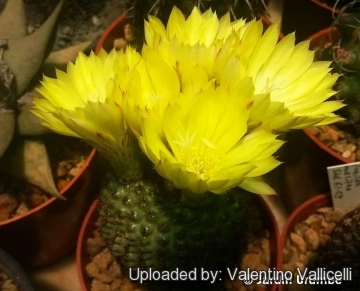 Frailea chiquitana Photo by: Valentino Vallicelli
Frailea chiquitana Photo by: Valentino Vallicelli Frailea chiquitana Photo by: Valentino Vallicelli
Frailea chiquitana Photo by: Valentino Vallicelli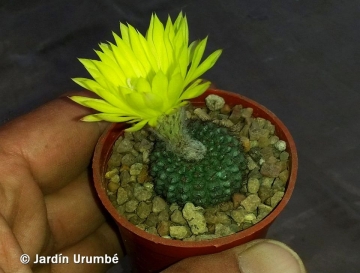 Frailea chiquitana Photo by: Alexander Arzberger
Frailea chiquitana Photo by: Alexander Arzberger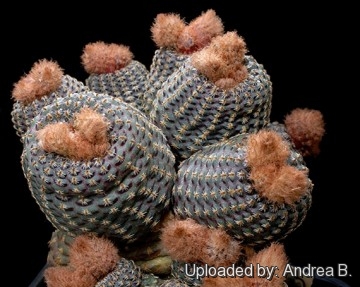 Frailea chiquitana Photo by: Andrea B.
Frailea chiquitana Photo by: Andrea B.Send a photo of this plant.The gallery now contains thousands of pictures, however it is possible to do even more. We are, of course, seeking photos of species not yet shown in the gallery but not only that, we are also looking for better pictures than those already present.
Read More... Cultivation and Propagation: Frailea chiquitanaSN|3603]]SN|3603]] is a summer grower species relatively easy to grow. It is sometime seen as a grafted plant but grows very well on its own roots too. Characteristically, during the dry season plants retract completely under the ground both in the wild and in cultivation too.
Growth rate: Fraileas are relatively short-lived plants, only lasting few years (rarely more than 10-15 years in cultivation) and, possible annuals in habitat! In fact they reseed readily around the base of the mother plant if kept reasonably moist during warm weather. It is a good idea to keep restarting them from seed; what looks like a healthy big plant may suddenly die of old age without warning.
Soil: Use mineral well permeable substratum with little organic matter (peat, humus), plants may become too elongated if compost is too rich.
Repotting: Re-pot every 2 years. Use pot with good drainage.
Fertilization: It grows much faster with a low nitrogen content fertilizer in spring and summer. Potassium helps maintaining the plants compact and healthy.
Watering: Requires careful watering to keep plant compact. Water sparingly from March till October, the thin, fibrous roots suffer if there is humidity, therefore the plant should be watered only when the surrounding terrain is dry. Keep dry as soon as the temperature starts dropping in October and keep it perfectly dry in winter at temperatures from 5 to 15 degrees centigrade.
Hardiness: They need a minimum temperature of 5-10° C (but occasionally temperatures of a few degrees below 0° are not dangerous if kept on the dry side prior to, and during, cold weather). It tends to rot in winter during the resting phase, if kept wet. In the rest period no high atmospheric humidity!!
Sun Exposure: Light shade to full sun, its colour tends to richer and darker when grown in light shade. In a shaded position the plants grow faster, but are not flat shaped and dark coloured.
Uses: It is an excellent plant for container growing. It always looks good and stays small.
Pests & diseases: It may be attractive to a variety of insects, but plants in good condition should be nearly pest-free, particularly if they are grown in a mineral potting-mix, with good exposure and ventilation. Nonetheless, there are several pests to watch for:
- Red spiders: Red spiders may be effectively rubbed up by watering the infested plants from above.
- Mealy bugs: Mealy bugs occasionally develop aerial into the new growth among the wool with disfiguring results, but the worst types develop underground on the roots and are invisible except by their effects.
- Scales: Scales are rarely a problem.
- Rot: Rot is only a minor problem with cacti if the plants are watered and “aired” correctly. If they are not, fungicides won't help all that much. To prevent rottenness it is also advisable to surround its root neck by very rough sand or grit, this help a fast water drainage.
Propagation: With fresh harvested seeds or (rarely) by grafting. Fraileas set seed (when well grown) and grow easily from seed. Seedlings dislike strong light and dry conditions and need to be repotted frequently during the first few years. However, old plants become senile and have a tendency to succumb to disease and a weak root system. At this stage, as is well known, they die suddenly. So, after they reach about 4-5 cm in diameter grow them slowly, and adopt a new repotting period, using intervals of every 3-4 years. Additionally grow them under drier conditions or with stronger sunlight. But plants are sometine grafted to accelerate growth, but the grafted plants are typical rather tall growing, compared with plants on their own roots that are usually more flat to the ground.


















